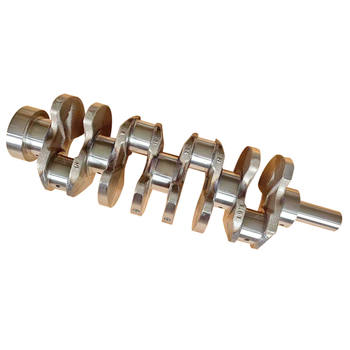The Importance of Crankshaft Inspection
Have you ever wondered how crucial a crankshaft is to your engine's performance? To be honest, it plays a vital role in transforming linear piston motion into rotational force. But, as with any engine component, wear and tear can lead to problems. That's where crankshaft inspection comes in. While visual examination is a good starting point, there are other techniques that provide more in-depth analysis.
Why Go Beyond Visual Examination?
Visual inspection can reveal surface defects, but it may not detect cracks or flaws beneath the surface. These hidden defects can significantly impact your engine's performance and longevity. That's why it's essential to consider non-destructive testing (NDT) methods for a comprehensive crankshaft inspection.
Magnetic Particle Inspection (MPI)
MPI is an NDT method that can identify surface and near-surface defects in ferromagnetic materials. It works by magnetizing the crankshaft and applying iron particles to the surface. Any discontinuities in the magnetic field caused by defects will attract these particles, making them visible for analysis.
How to Perform MPI
To perform MPI, follow these steps:
Ultrasonic Testing (UT)
UT is another NDT method that uses high-frequency sound waves to detect internal and surface flaws in materials. It's particularly useful for crankshaft inspection, as it can identify cracks, porosity, and inclusions that may not be visible during visual examination.
How to Perform UT
To perform UT, follow these steps:
- Prepare the crankshaft surface by cleaning and applying a couplant.
- Use an ultrasonic transducer to send sound waves into the material.
- Analyze the echo patterns produced by the sound waves as they interact with the material.
- Interpret the results to identify any defects or anomalies.
Practical Applications and Tips
Here are some actionable tips for implementing advanced crankshaft inspection techniques:
- Invest in NDT equipment or partner with a professional service provider to ensure accurate results.
- Develop a regular inspection schedule based on manufacturer recommendations and your engine's usage.
- Document your inspection findings and maintain records for future reference.
In Conclusion: Prioritizing Crankshaft Health
To keep your engine running smoothly, it's essential to go beyond visual examination when inspecting crankshafts. By incorporating NDT methods like MPI and UT, you can identify hidden defects and prevent potential issues before they become significant problems. In my experience, prioritizing crankshaft health through comprehensive inspection leads to improved performance, better fuel efficiency, and extended engine life. So, what are you waiting for? Take the next step in crankshaft care today!




